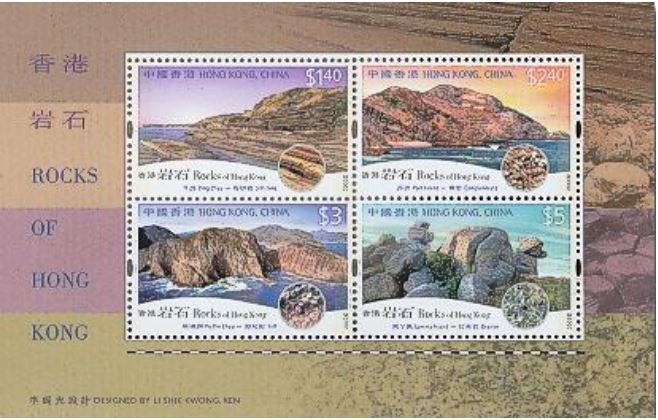On November 14, 2013 I presented a program simply entitled “Minerals on Stamps” to the Rochester Philatelic Association. As a retired geologist, collecting minerals and other geology related topical stamps is a natural merger of my collecting interests.
Did you know that the checklist of gems and minerals on stamps maintained by the Gems and Minerals Study Unit of the American Topical Association has over 3000 entries? Or that all 8 of the US mineral stamps depict specimens that reside in the Smithsonian? The FDC with the four 10 cent stamps issued in 1974 is depicted shown below. The mineral specimen in the bottom stamp is affectionately referred to as “The Postage Stamp Tourmaline.” It is from the pegmatite mines outside San Diego, CA.
One interesting idea for a mineral collector is to marry minerals on stamps with pieces personally collected. The Kyrgyzstan mineral set of 2000 may not be authentic postage (Scott vol. 4), but the 20c wavellite stamp fits nicely into an exhibit/collection when paired with a wavellite specimen collected this past August on a field trip to National Limestone Quarry in Mount Pleasant, Pennsylvania. The mineral specimen is most certainly authentic!
As a geologist my interests transcend minerals and rocks can be neat also. Hong Kong issued a set of 4 stamps depicting rocks in their country. Interestingly, the rock outcrop portions of the stamps was applied with a thermographic process resulting in a shiny raised surface.

Snowflakes are minerals too! And recently several countries have been inspired by the snowflake photography of physicist Kenneth Libbrecht. He photographed snowflakes in a temperature regulated enclosure with a digital camera attached to a high resolution microscope. The crystals appear blue because Libbrecht illuminated then with a bluish white light. The patterns are stellar dendrites, which form branching arms and hexagonally sectored plates. The upper right snowflake was memorialized on film in Fairbanks, Alaska, the lower left in Houghton, Michigan, and the other two in northern Ontario.

Lots more in the program from malachite to diamonds to gold and depicting stamps from Canada to South Africa. The program can be viewed on the RPA website. Below is a link.
http://www.rpastamps.org/presentations/minerals.pdf


